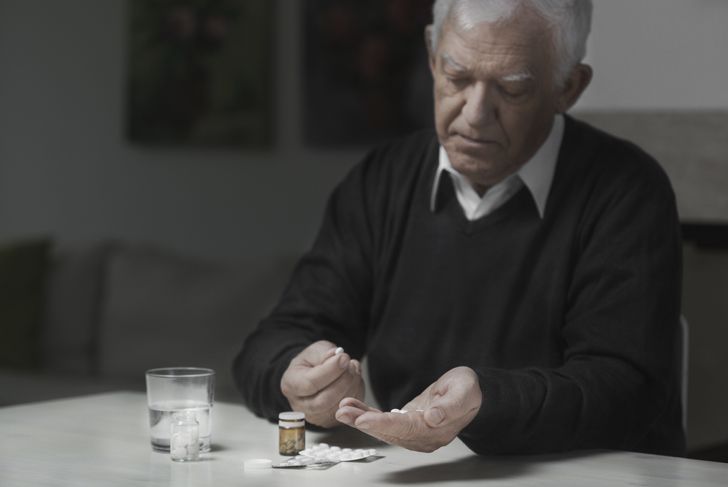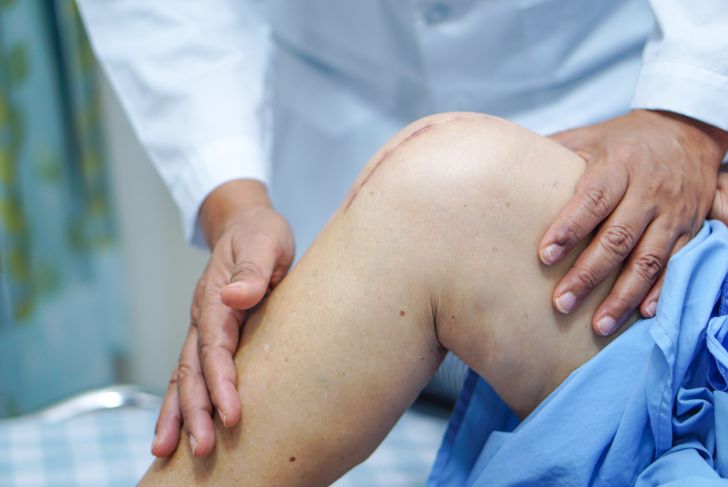A condition causing inflammation in any of the body’s joints is called arthritis. This inflammation occurs in more than one joint at a time. Arthritis can happen in people of all ages, but it’s much more typically diagnosed in people 65 or older. This condition also seems to favor women, as well as individuals who carry a substantial amount of excess weight. There are approximately 100 different types of arthritis, and each form produces different symptoms. The variations of arthritis require many different ways of treatment. Let’s take a look at what some of these treatments for arthritis entail.
Weight Loss
If you are overweight and have arthritis, then one of the most effective steps you can take for this condition is to lose weight. When your joints are already inflamed and causing pain throughout your body, the additional weight causes further stress on this part of your body. Extra weight adds pressure to the joints; it’s wise to follow an exercise regimen and try to eat healthier. Weight loss is a monumental achievement. You’ll need the help of family, friends, and your doctor to shed the extra weight and keep it off.
Exercise and Yoga
When you have arthritis and are overweight, you’ll experience more pain than an individual who is at their target weight. However, even if you are not overweight, taking up an exercise program can be great for the stiff and inflamed joints that arthritis symptoms can create. Yoga is thousands of years old. Science is finally catching up to understanding why the practice is so useful for a multitude of conditions. Yoga can increase flexibility, help you battle stress, and relieve many of the discomforts associated with arthritis. Your doctor should be able to assist you with particular exercises that can be helpful. You might want to consider seeing a physical trainer, but be sure to enjoy your exercise program. If you’re having fun during physical activities, you’re much more likely to create a healthy, long-term habit.
Change Your Diet
Eating healthier can help a person with arthritis lose weight, which can help lower the pressure on the joints. However, changing your diet may aid your arthritis symptoms no matter what your weight may be. Avoid alcohol, organ meats like liver and kidneys, and other items like dried beans, mushrooms, asparagus, anchovies. Removing foods that are high in purines will help prevent increases in discomfort and arthritic flare-ups. When the human body processes purines, it creates uric acid. This uric acid can cause crystals to build up in the joints, which add even additional pain and symptoms like gout.
Anti-Inflammatory Medications
Over-the-counter medications known as nonsteroidal anti-inflammatory drugs, otherwise known as NAISDs, can be especially helpful with the symptoms of arthritis. Purchase over the counter medications in drugstores. Ibuprofen, naproxen, and aspirin may help lessen distressful arthritis symptoms. There are also stronger medications that require prescriptions. All of these medications help to stop prostaglandins in the human body. Prostaglandins trigger mild to severe pain responses along with fever, and inflammation in the joints. Doctors can provide a single medication, or they may prescribe a mixture to work together to alleviate the effects of arthritis. It’s worth noting that medications may help reduce painful symptoms, but they cannot eradicate discomfort. A healthy diet, fun exercise program, and dedicated yoga practice are excellent ways to reduce arthritic symptoms further.
Pain-Relieving Creams and Gels
Many folks prefer not to take medications orally, or they don’t want to risk the side-effects that over-the-counter medications can have on the heart, stomach, liver, and kidneys. Relief can come from massaging creams and gels into the skin. These topical medications are indeed a viable option when it comes to relieving the painful symptoms of arthritis. Nonsteroidal anti-inflammatory drugs also come in the form of topical solutions, and they can be applied directly to the joints that are causing the pain. However, while initially these creams were believed to be harmless in comparison to oral medications, but some have been found to be especially damaging to the liver. Talk to your physician before deciding what topical ointment to use for your discomfort.
Antidepressants
The painful effects of arthritis can most definitely cause depression and anxiety. However, these conditions aren’t the only reasons a doctor might be inclined to prescribe them. Antidepressants, especially tricyclics, can be used to treat the chronic pain associated with arthritis. Many scientists and physicians disagree on exactly how these antidepressants help with the pain, but they are believed to affect chemicals in the brain that cause the body to experience pain. However, antidepressants come with side effects, such as a dry mouth, drowsiness, and blurry vision.
Reduction of Uric Acids
Doctors may prescribe medications that’ll reduce uric acid in the body. These medications lower the levels of uric acids. Reducing the uric acid in your system is important because uric acid is connected to rheumatological flare-ups. Prescribed medications assist in breaking down the uric acids in the body. Removing these waste products through urine helps prevent attacks of gout. As with most drugs, there are side effects, including nausea, allergic reactions and bruising along the injection site.
Joint Replacement
If a particular joint is causing extreme pain, then the individual may opt to have joint replacement surgery. This is particularly popular with the hips and knees, where joints seem to wear out faster than the rest of the body. People living with arthritis may only have a portion of their knee or hip replaced, which is less evasive but helps with the stiffness and the overall range of motion. Metal or plastic versions replace weak joints. The recovery time for joint replacement surgery is lessening as technology has improved.
Arthroscopy
If other treatments fail and a person’s quality of life is limited, additional surgery may be an option. A surgeon will make a tiny incision to look inside the joint, inserting a thin tube that lights up once inside. This procedure is known as arthroscopy. Keyhole procedures allow the surgeon to make repairs to the joints, such as removing any pieces of cartilage or bone that may have found their way into the area. Or the surgery will smooth out the edges of the joint and possibly remove swollen tissues.

 Home
Home Health
Health Diet & Nutrition
Diet & Nutrition Living Well
Living Well More
More



















